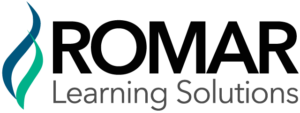
The more interactive a training program is, the better. It doesn’t matter whether you are facilitating a live workshop or a webinar or building eLearning—the more involved the learner is in the program, the more efficiently he or she learns, retains, and uses the new information. The Golden Rule of Learning captures the concept of getting the learner highly involved:
Whoever is doing the work is doing the learning!
Building a good training initiative should focus mostly on engagement—creating numerous activities that challenge learners to explore and try new knowledge/skills/behaviors in a way that will develop their performance to a higher level.
Tips for Designing Learning Activities
As you design and deliver your training programs, your creation of effective learning activities that drive development is essential. Below are six ideas for building effective learning activities:
1. Make them fun
The more fun you can make the learning activity, the better the learners will receive it and the more engaged they will be in the activity. However, what is fun to a trainer may not be fun for the learners. Once during a training program for a group of scientists in a pharmaceutical company, the trainer thought it would be fun to have the scientists come on stage to perform a dance that reflected their leadership style. This group of largely introverted research scientists didn’t find having to do an extemporary dance in front of their colleagues fun. The activity needs to meet the learners’ needs in a way they find enjoyable. For example, a sales team might have enjoyed the extemporary dance approach (although it’s doubtful) more than the scientists did.
2. Integrate job tasks
The best activities in a learning environment are ones that provide learners the opportunity to practice integrating what they are learning into their work. The closer the activity is to real life, the more likely they are to become engaged because the activity has meaning. If you are teaching salespeople selling skills, then the more they can practice selling during the activity, the better.
3. Use learner case studies
Getting learners to integrate their real-life work situations into the learning activities is a good practice. Incorporating the learners’ work into the activity not only develops the new knowledge/skills/behaviors but also helps them integrate the learning into their daily routine. One challenge of experiential learning, such as rope courses, is that it’s difficult for the learners to visualize the integration of the learning into their daily work activities. For example, if a sales team is learning a new marketing message, having them complete an activity in which they must actually apply this message to a personal case study is more effective than simply discussing how they would apply it.
4. Role-play for excellence
Role-plays are highly effective learning activities if they are well designed. Learners often say that they don’t like role-playing, but that’s usually because role-plays are poorly designed. Effective role-playing must be:
- Safe. Learners need to be able to try something new without being embarrassed, criticized, or evaluated. If you want the learners to try something new, then ensure that the role-play is a situation in which they aren’t negatively affected by taking a chance.
- Realistic. The most effective role-plays reflect real-life situations the learners will encounter and ask the learners to try something in a setting that replicates what they will find on the job.
- Challenging. If the learners implement the same knowledge/skills/behaviors during the role-play that they would have exhibited before the training, the activity is a waste of time. Good role-plays require the learners to up their game and try something new and different.
5. Create fun games
As children we learned that playing games is a fun way to learn. The same is true of adults. For example, a knowledge check that’s a game is more fun than a paper-based test. Ensure that the game is practical and clearly relates to the learning content. An ideal game simulates something the learners perform routinely in their jobs. The other advantage of a game-based activity is that it appeals to the learners’ competitive nature.
6. Make them real and challenging
Realistic, practical learning activities are ideal! If you want the learners engaged in the program, ensure that the activities directly correlate to the daily tasks the learners must perform. In addition, activities should be challenging. If the learners could have completed the activity outside of the training, then the activity wasn’t challenging enough. Simulations and role-plays offer a great opportunity to make the learning real.
Summary
Incorporating effective learning activities into your training starts with ensuring that the training program is learner-centric and engaging. The more you can get the learner involved in activities versus passively listening to lectures or reading, the more they will learn. Good learning activities must be fun and focus on what the learners do routinely in their work. Activities should be challenging and push the learners to try something new in a safe, nurturing setting. Delivering a lecture, no matter how entertaining you might be, is not as effective as transferring knowledge/skills/behaviors through challenging, fun activities.




